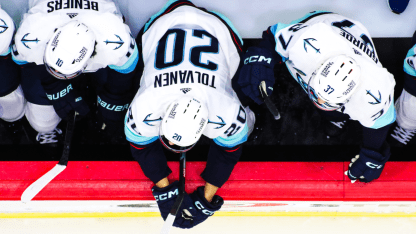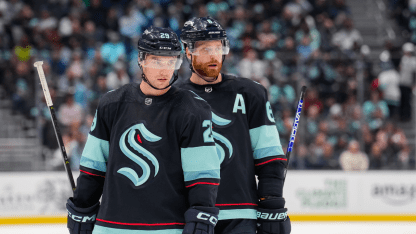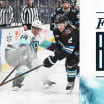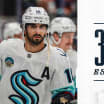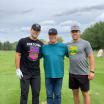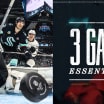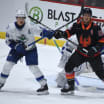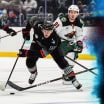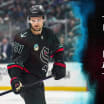As an NHL player, Kraken broadcast analyst JT Brown played 365 regular season games over seven seasons with three teams, plus 41 more in the postseason including 24 games with Tampa Bay in 2015 when the Lightning reached the Stanley Cup Final.
Now in his third year as an analyst beside Kraken play-by-play man John Forslund, Brown’s 365 is all about continuing his formidable and popular craft as a former player who helps tell the story of each Kraken season, goal by goal, shift by shift, from the perspective of an athlete who played top minutes and starred at NCAA Minnesota-Duluth, signed with Tampa Bay as a top undrafted free agent, and averaged 12 to 14 minutes of time on ice per game for the franchise.
Brown has a bountiful mental catalog of playing experiences to inform viewers on ROOT Sports but also keeps a meticulous notebook to prepare for every broadcast. During games, he likes to get a copy of each period’s stat sheet. He specifically scans for time-on-ice numbers, looking hard at shift lengths per player.
His search can turn up outliers to the typical NHL shift, which roughly varies from 35 to 45 seconds of game-clock time. Among other nuggets to help educate fans, he’s looking for fresh players who might be matching up with tired opponents or whether a team is effectively getting fatigued skaters off the ice.
“I’m sure there is somebody who’s done the science behind it, but always, the longer your shifts, the more mistakes you end up making,” said Brown, stopping for a conversation after Seattle’s home win over Ottawa last week. “Your knees are not as bent [as optimal], you’re more upright, you’re not making good decisions with the puck.”
Stop there for any hockey players, youth programs, or adult leaguers: Brown is pointing out skating form or posture as an indicator the pros use every shift, whether knees are bent at 90 degrees range, knees over toes, shoulders aligned with knees and toes, and pressure on balls of the feet.
Back to Brown on why shift length matters in hockey at the highest level: “As a shift goes on, you get tired. Obviously, you only have so much oxygen. Whether it’s going to go into your brain to make smart decisions or you don't have enough energy to backtrack [say, defend an opposing rush or retrieve a puck].”
Brown said players who extend a shift – there is not always a choice because defending in your team’s zone is a must – can feel it the next time jumping over the boards and into play on the fly.
“Let’s say you have one or two big shifts, it's hard to get yourself back to feeling 100 percent,” said Brown. “It might take one or two shifts [in the 40-second range] to kind of get yourself back to feeling like you can give 100 percent. If you give 100 percent on for 30 to 40 seconds, you’re going to get tired and it’s time for a change.”
Time on Ice or TOI is a stat worth following for fans. You can see which players are winning a coach’s trust at even strength or during powerplays and penalty kills. There are some players who beef up TOI per game because they are on the ice with one-goal leads at the end of the game. You can compare players to see how many shots on goal or scoring chances they generated as compared to their time on ice.
The top NHL leaders for time on ice per game will always be defensemen. It starts as strictly a numbers proposition. Most NHL coaches roll out four lines of three forwards each (center and two wings) during a game but most frequently only three pairs of defensemen. Strictly math: The centers and wings divvy up 60 minutes four ways (with the top-six forwards averaging more than the bottom-six) or a 15 minutes-per-game average. Suiting up six defensemen divides out to 20 minutes per D-man.

